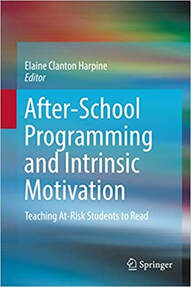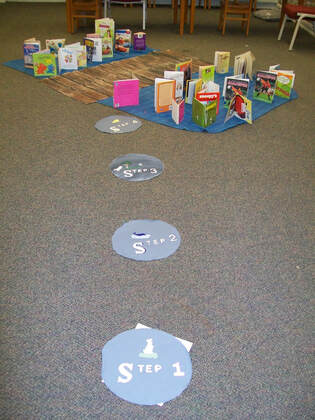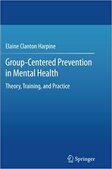“In reading, 37% of seniors scored at or above proficient in 2019. That’s about the same as in 2015, but down from 1992, when 40% of US seniors scored at least proficient on the exam.”
This tells us that America’s high school graduates are going to be marching across the stage receiving a diploma with lower reading scores than ever before. These test scores are before the coronavirus pandemic. So, these scores are from regular classroom instruction before Covid-19.
Let’s take a few minutes to make sure that we are reading these scores correctly because there are several news agencies and websites that are misinterpreting the data.
What Does The Nation’s Report Card Tell Us?
Please note where the quotation above says “at least proficient.” What does proficient mean?
Proficient means capable of producing desired results, but what does proficient mean in terms of the exam? If a student reads at the proficient level, it means that they are able to read at their grade level.
Maureen Downey, education writer for the Atlanta Journal-Constitution, provides the following clarification on what proficiency means: “NAEP [National Assessment of Educational Progress] results are measured at three achievement levels: Basic, Proficient and Advanced. Basic denotes partial mastery of knowledge and skills, Proficient denotes solid academic performance and Advanced represents superior work. To determine the percentage of students performing at or above the level indicating college preparedness, a single score is identified in each subject. These scores correspond closely with scores that define the Proficient level but were independently determined as a result of the Governing Board's preparedness research.”
Basic means that a student knows a few things but probably not enough to make a passing grade or be an effective reader. A student who cannot read at the basic level is also not comprehending what they read. A student at the basic level may have a decoding/encoding problem and/or the student may have a comprehension problem. Most likely, students at the basic level have both an inability to decode/encode along with very weak comprehension skills.
Proficient means that the student can read at grade level. A proficient student will have a passing grade in reading most likely. Proficient means the student is effectively decoding/encoding as well as comprehending what they are reading.
An advanced student will most likely be at the top of their class making A’s in reading. These are your advanced readers.
So, What Does A Proficient Score Mean?
A proficient score means that the 12th grade students who received a proficient score could read at the 12th grade level.
Now let’s go to the Nation’s Report Card and look at the scores. The National Assessment Of Educational Progress (NAEP) provides the following scores for 4th, 8th, and 12th grade for 2019. The NAEP has been measuring reading scores since 1992, and while testing is not perfect, this does give a means of evaluating the effectiveness of teaching methods across a period of time. If our teaching methods are improving, as they should be each year, then we should see improvement in reading scores each year as well.
Remember that all of these tests scores were taken before the coronavirus pandemic. This is before Covid-19, before the lockdown, before we started arguing about whether students should or should not be returned to the classroom. These are scores from the normal, everyday classroom.
These figures are straight from the NAEP [National Assessment of Educational Progress]. The NAEP scores identify what students should know and be able to do in reading.
4th Grade Reading Scores for 2019
The National Center for Education Statistics 2020 report, Condition of Education, reports the dismal numbers: “In 2019, some 66 percent of 4th-grade students performed at or above the NAEP Basic achievement level in reading, 35 percent performed at or above NAEP Proficient, and 9 percent performed at NAEP Advanced.”
This means that:
66% at Basic—cannot read at grade level
35% at Proficient—can read at grade level
9% at Advanced—can read above grade level
If we stop and think about it, these scores are telling us that across the nation, only 44% of the 4th graders tested could read at grade level. That is less than half of the students. That means that less than half of the students in 4th grade were able to read at the 4th grade level by the end of fourth grade. No matter how you look at it, that is not a good percentage. It does not help if you adjust for testing error or student complications. If we are using an effective teaching method in the classroom, the percentage of students testing at the proficient level should be higher. As I have explained in previous blog posts, poverty and low socioeconomic neighborhoods are not the cause of low reading scores. Keller and Just, in their landmark research study in 2009, demonstrated that children from low socioeconomic neighborhoods can be taught to read when you change the teaching methods.
I have also worked with numerous children from the housing projects. A 15-year-old who failed for nine straight years learned to read using vowel clustering at my reading program. Another student who entered my program failing in reading moved up four grade levels in one year, came from a single-parent home, and lived in the housing projects. Poverty does not cause reading failure. Poor or inadequate teaching methods cause reading failure.
No, students do not automatically improve as they progress through school. As noted with the eighth-grade scores, students actually get worse.
8th Grade Reading Scores for 2019
According to the National Center for Education Statistics, “In 2019, some 73 percent of 8th-grade students performed at or above the NAEP Basic achievement level in reading, 34 percent performed at or above NAEP Proficient, and 4 percent performed at NAEP Advanced.”
73% at Basic—cannot read at grade level
34% at Proficient—can read at grade level
4% at Advanced—can read above grade level
Again, across the nation, only 38% of 8th graders tested could read at grade level. Notice that the scores are getting worse. That is still less than half of the students. That means that less than half of the students in 8th grade were able to read at the 8th grade level.

12th Grade Reading Scores for 2019
Twelve-graders have not been doing any better. Peggy G. Carr from the National Center for Educational Statistics stated that "The decline in twelfth-grade reading scores resembles the declines in fourth- and eighth-graders' reading scores, where we saw the largest declines among the lowest-performing students."
With this year’s interpretation of 12th grade scores, the Nation’s Report Card also listed a number of 12th graders scoring below the basic level.
33% at Basic—cannot read at grade level
31% at Proficient—can read at grade level
6% at Advanced—can read above grade level
Failure does not simply vanish on its own. Reading failure when it goes uncorrected leads to more reading failure. We must change our teaching methods from kindergarten all the way through high school. We can teach these students to read.
Comprehension plays a major role in these low reading scores. Comprehension means you understand what you are reading and can apply that understanding. Obviously, many students across the nation are struggling with comprehension. The methods that we are using to teach comprehension are definitely not working. We need a new approach.
The NAEP criteria for a basic score required the student to be able to:
- “Identify elements of meaning and form and relate them to the overall meaning of the text”
- “Make inferences, develop interpretations, make connections between texts, and draw conclusions”
- “Provide some support for analyses”
- “Interpret the meaning of a word as it is used in the text”
As you can see, the requirements for a basic score were not that challenging. After 12 years of classroom education, a student should be able to meet these basic requirements.
As Peggy Carr, the Associate Commissioner of the National Center for Education Statistics, stated, “…over the past decade there has been no progress in either mathematics or reading performance, and the lowest performing students are doing worse….”
Classroom education in reading is in terrible trouble. No, not just because of the coronavirus pandemic or because students are being taught online, classroom teaching methods in reading are not working. Methods being used in the classroom right now are failing teaching methods. They have been shown to be failing for over 20 years. When will we wake up, stop wasting children’s lives with phonics and cueing methods, and begin to actually teach an effective reading approach?
Our classroom teaching methods should be helping students get ready for college or for whatever type of career job they are planning. Unfortunately, failure does not help any student get ready to assume a professional position in society.
Asking why reforms have not been working, educational policy author, Maureen Downey discusses the poor preparation that our students have been receiving:
“The National Assessment of Educational Progress (NAEP), known as The Nation's Report Card, also shows that an estimated 37 percent of 12th-graders are prepared for college-level coursework in each subject. In 2013, the last time the assessments were given, an estimated 39 percent of grade 12 students were prepared for college-level mathematics and an estimated 38 percent for college-level reading.”
Approximately 61% of 12th graders reported on a questionnaire that they wanted to go to college, but only 37% are prepared for college-level work, and the scores are getting worse each year instead of better. How are 12th graders who cannot read at the proficient level going to succeed in college?
The answer: they are not.
Why Are Students Failing in Reading?
Because of the teaching methods we use in the classroom to teach reading. The approach we use to teach reading must change before scores get worse. Yes, reading scores will continue to get worse unless we change the teaching methods that we are using in the classroom.
Comprehension is one of the major reasons that 12th grade scores were so low. Comprehension is also one of the reading skills that I want us to examine in detail.
Many researchers are beginning to say that comprehension is one of the primary reasons for reading failure. Unfortunately, there is a lot of confusion over how we can effectively teach comprehension.
Comprehension is essential in college classes. Comprehension skills are essential in many business jobs. Comprehension is essential just for life. If you cannot comprehend what you are reading, you also cannot apply critical thinking or basic reasoning skills when reading. Understanding both literary and informational texts is a very basic skill. As Maureen Downey goes on to explain, twelth-graders in the United States are weak in comprehension and are not even able to identify important details when they are reading:
“The results are based on a nationally representative sample of 18,700 12th-graders from 740 schools. The reading assessment measures students' comprehension of two types of texts: literary and informational. Students earning a score equivalent to the national average were likely to be able to make an inference based on details in a reading text but were not likely to be able to recognize detail related to the purpose of a reading text.”
From kindergarten to 12th grade, we absolutely must improve reading and comprehension for all ages. As this research shows, reading ability does not automatically improve as students get older. If anything, reading ability gets worse.
What Should Be Done to Improve Reading Scores?
America’s high schoolers are graduating with a lower ability to read than ever before.
Many try to explain away these scores by saying, “testing is just not fair.” “We have too much testing.” “We should stop testing.” “Or that’s statistical error.”
Stopping the testing will not make reading improve. Stopping the testing will just hide the disastrous job that is being done in the classroom. No, what we need to do is change how we teach reading in the classroom.
Rerunning the stats will not make the scores look any better either. When scores are this low, there is something wrong.
One of the primary focuses for these 12th grade students is comprehension. Thomas Kane of the Brookings Institution offers one suggestion for improving comprehension. He emphasizes high standards and more time devoted to student writing: “…the combination of high standards and use of many more open ended items on the PARCC and SBAC tests, requiring students to explain their thinking, to write coherently and to demonstrate conceptual understanding, perhaps we will see an acceleration of progress in student achievement, and literacy.”
In other words, we need to quit trying to teach with worksheets and multiple-choice tests. If we want reading scores to improve, we must actually teach comprehension. We must also teach critical thinking, as we discussed in my previous blog post.
As the Nation’s Report Card scores demonstrate, the method that we are using to teach reading and comprehension at present in the classroom is not working. Yes, the pandemic will make it harder, but I want to remind you that all of these scores are from classroom teaching methods and how reading was being taught in the classroom before the coronavirus pandemic. No, we cannot blame these low scores on testing nor can we blame it on the coronavirus pandemic. The cause of failing scores in reading is teaching method—the way we are teaching reading and comprehension in the classroom.
How should we teach comprehension? If the methods we are now using are not effective, what should we do to change? In my next blog post, we will turn to neuroimaging research to find the answer.




 RSS Feed
RSS Feed
